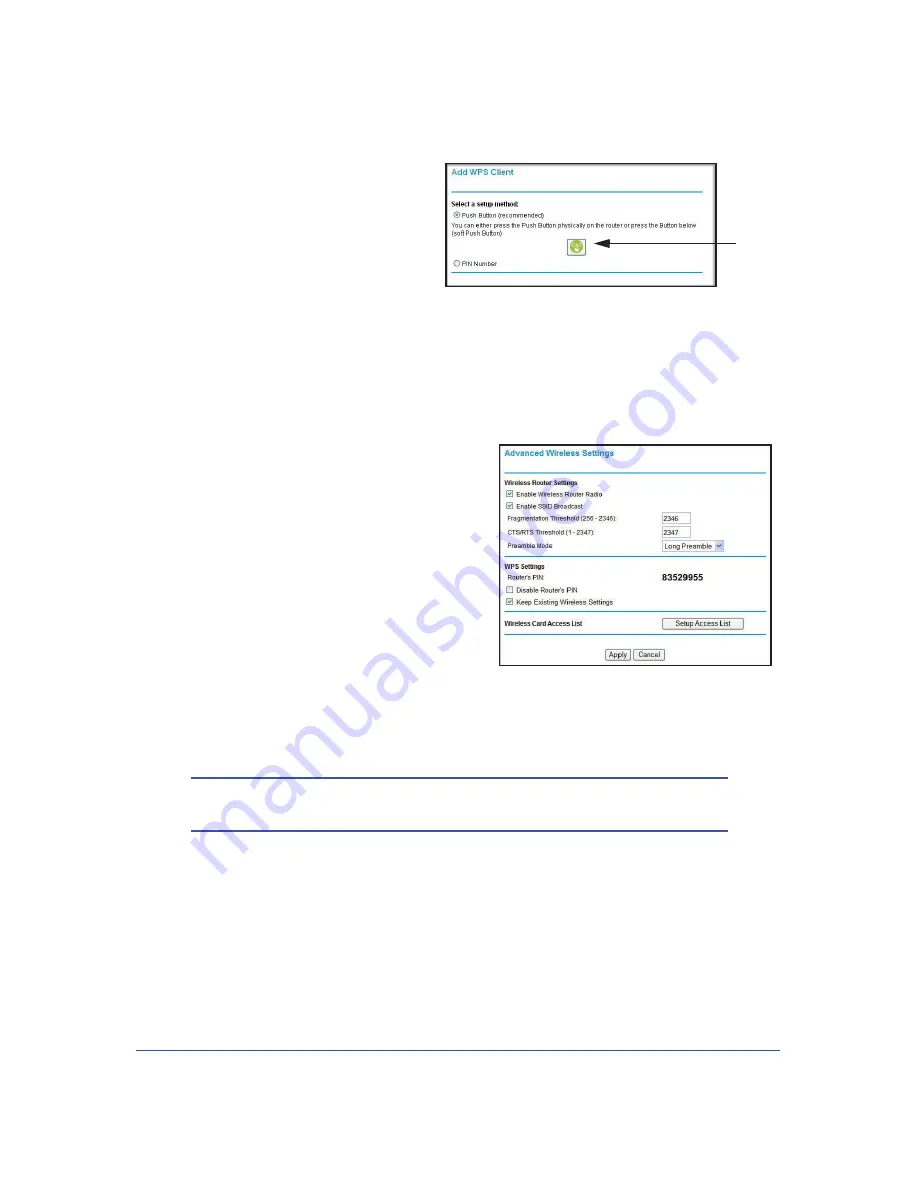
Wireless Network Configuration
31
LTE Broadband 11n Wireless Router MBR1515
2.
On the router main menu, select Add
WPS Client, and then click
Next
.
WPS
button
By default, the
Push Button
(recommended)
radio button is
selected.
3.
Either click the onscreen button or
press the WPS button on the front of
the router.
The router tries to communicate with the client (the computer that wants to join the
network) for 2 minutes.
4.
Go to the client wireless computer, and run a WPS configuration utility. Follow the utility’s
instructions to click a WPS button.
5.
Go back to the router screen to check for a message.
The router WPS screen displays a message
confirming that the client was added to the
wireless network. The router generates an
SSID, and implements WPA/WPA2 wireless
security. The router will keep these wireless
settings unless you change them, or you
clear the
Keep Existing Wireless Settings
check box in the Advanced Wireless
Settings/WPS Settings screen.
6.
Note the new SSID and WPA/WPA2
password for the wireless network. You can
view these settings in the Wireless Settings
screen. See
Manually Configure Your
Wireless Settings
on page 27.
To access the Internet from any computer connected to your router, launch a browser such
as Microsoft Internet Explorer or Mozilla Firefox. You should see the router’s Internet LED
blink, indicating communication to the ISP.
Note:
If no WPS-capable client devices are located during the 2-minute
time frame, the SSID does not change, and no security is set up.
WPS PIN Entry
Any wireless computer or device that will connect to the router wirelessly is a client. The
client must support a WPS PIN, and must have a WPS configuration utility, such as the
NETGEAR Smart Wizard or Atheros Jumpstart.
The first time you add a WPS client, make sure that the
Keep Existing Wireless Settings
check box on the WPS Settings screen is cleared. This is the default setting for the router,
and allows it to generate the SSID and WPA/WPA2 security settings when it implements






























